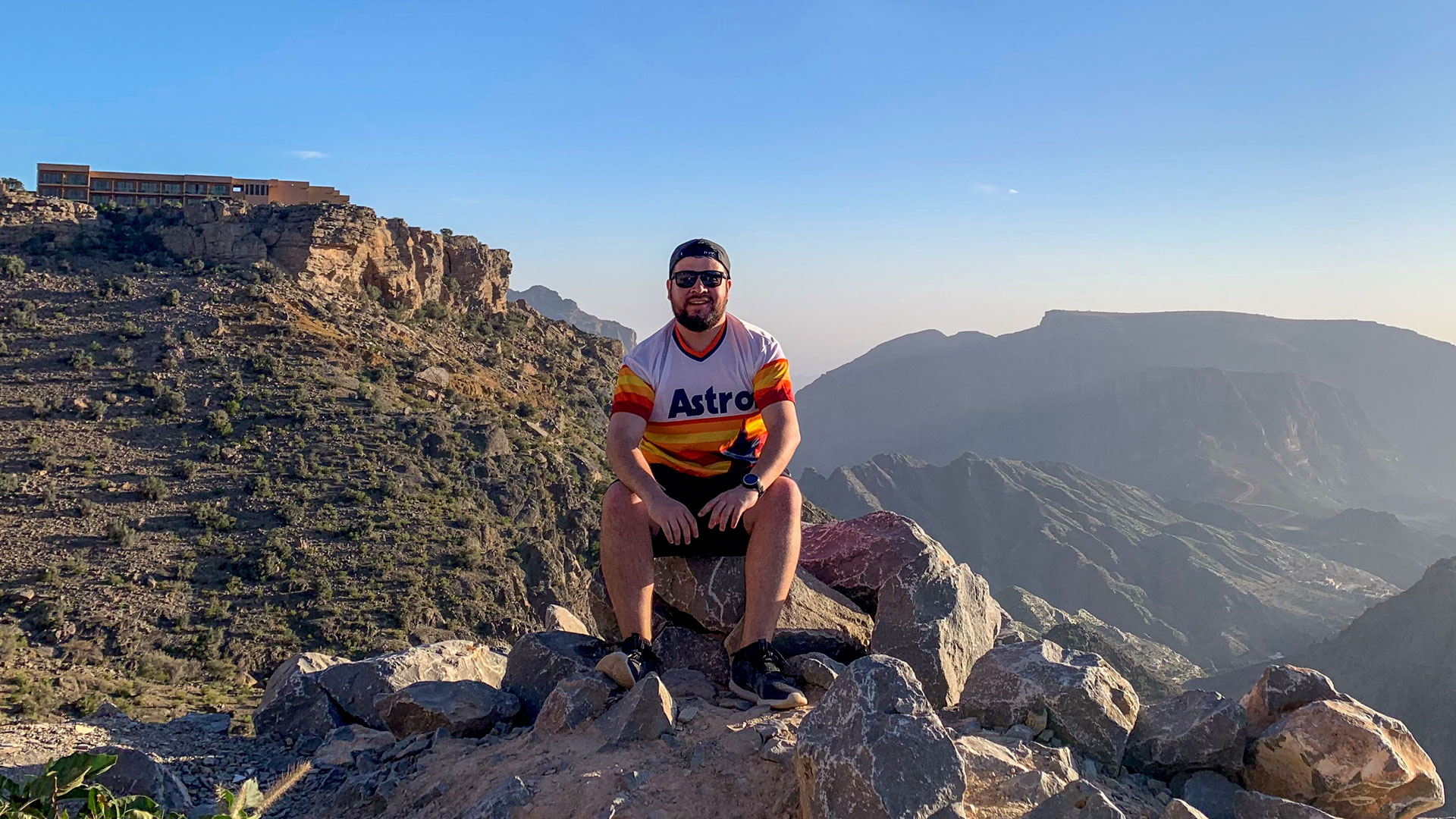- Future Students
- How to Apply
- Visit UHCL
- Admitted Students
- Tuition, Costs and Aid
- Degrees and Programs
- Contact Admissions
- Current Students
- Class Schedule
- Academic Calendar
- Advising
- Events
- Library
- Academic Resources and Support
- Student Services and Resources
- Alumni
- Lifetime Membership
- Alumni Events
- Update Your information
- Awards and Recognitions
- Give to UHCL
Rocky roads up the tallest mountain in Oman make for spectacular views
January 28, 2019 | Jesus Mejia

On the trip we traveled from Muscat, the capital of Oman in the north of the country
down to Salalah in the south. We traveled in 4x4s during most of the journey. After
two days in the world’s largest desert, we drove to Oman’s highest mountain range
and spent the night on Jabal al-Akhdar, which translates as “green mountain.” The
mountains are green here because the temperature is quite cool, and because the locals
here have cultivated terraced agriculture, making actual terraced ridges on the mountains
that are plots where many different fruits and vegetables are grown. While here, we
got to actually walk the footpaths of these mountain garden plots and see how the
falaj watering systems were adapted to a mountainous environment. We saw the same
type of falaj irrigation systems in all of the geographic sites we visited. This irrigation
system is what still contributes to Oman’s ability to thrive despite the hot and dry
conditions, and has been officially recognized as one of Oman’s most iconic cultural
symbols. It has been recognized as such by UNESCO world heritage. This is me, taking
a break to admire the majestic emerald landscape.
About the Author
Jesus Mejia is a senior receiving his bachelor’s in history with a minor in Middle
Eastern studies. He’s a member of UHCL’s Model Arab League team. After obtaining his
degree in fall 2019, he hopes to become a high school history teacher and soccer coach.
He’s determined to get his doctorate someday, and his ultimate goal is to become a
university professor. He’s a huge Houston sports fan.
More from Oman study trip:
Jan. 24, 2019 - Hawk and camel begin friendship in Oman study trip
Jan. 11, 2019 - UHCL students study ancient artifacts at excavation site in Oman
Jan. 8, 2019 - UHCL students begin cross-cultural experience on study trip to Oman






